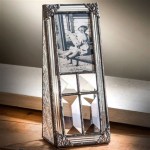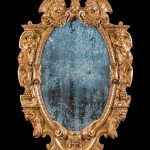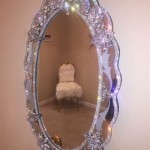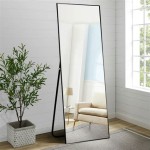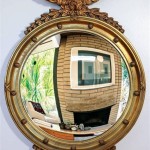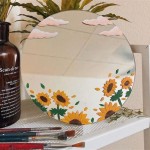What Type of Image is Produced by a Convex Mirror?
Convex mirrors, often referred to as diverging mirrors, possess a reflective surface that bulges outwards. This unique shape dictates how light rays interact with the mirror and consequently, the type of image formed. Understanding the image characteristics produced by convex mirrors is crucial in their various applications, from security mirrors to automotive side-view mirrors.
Key Characteristics of Images Formed by Convex Mirrors
Images produced by convex mirrors consistently exhibit specific characteristics regardless of the object's position. These key traits define the image and differentiate convex mirrors from other types of mirrors.
Virtual
Unlike concave mirrors, which can produce both real and virtual images depending on the object's location, convex mirrors always produce virtual images. A virtual image is formed when light rays appear to diverge from a point behind the mirror. These images cannot be projected onto a screen as they are not formed by the actual convergence of light rays.
Upright
Another defining characteristic of images formed by convex mirrors is their upright orientation. This means the image appears in the same vertical orientation as the object. Regardless of how close or far the object is from the mirror, the image will always be upright.
Diminished
Convex mirrors always produce diminished images. This means the image size is smaller than the actual object size. The further the object is from the mirror, the smaller the image appears. This diminishing effect is a direct consequence of the diverging nature of the reflected light rays.
Location of the Image: Behind the Mirror
As previously mentioned, the image formed by a convex mirror is virtual. This implies that the image appears to be located behind the mirror's surface. The exact distance of the image behind the mirror depends on the object's distance and the curvature of the mirror.
Field of View: Wider Than a Plane Mirror
One of the most important properties of convex mirrors is their wide field of view. Because the mirror surface bulges outwards, it can reflect light rays from a wider angle than a plane mirror. This allows the observer to see a larger area reflected in the mirror, a property that is highly advantageous in numerous applications.
Applications of Convex Mirrors
The unique image characteristics of convex mirrors make them suitable for various practical applications, leveraging their ability to provide a wide field of view and a diminished, upright image.
Security Mirrors
Convex mirrors are frequently used in stores and other establishments for security purposes. The wide field of view allows a single mirror to cover a large area, enabling security personnel to monitor a broader space. The diminished size of the images allows a larger area to be viewed within the mirror's frame.
Automotive Side-View Mirrors
Passenger-side side-view mirrors in vehicles are typically convex. The wider field of view allows the driver to see a larger portion of the road behind and to the side of the car, minimizing blind spots. The diminished image, while making objects appear smaller and further away than they actually are, allows for a greater field of vision, increasing safety.
Traffic Mirrors
Convex mirrors are often used at blind corners and intersections to improve visibility for drivers and pedestrians. The wide-angle view allows approaching traffic to be seen even when the road ahead is obscured, enhancing road safety.
The Physics Behind the Image Formation
The image formation in a convex mirror is governed by the laws of reflection. When parallel light rays strike the curved surface, they are reflected outwards, diverging away from each other. This divergence is the fundamental reason why convex mirrors produce virtual, diminished, and upright images.
Ray Diagrams
Ray diagrams are a useful tool for understanding how images are formed by convex mirrors. By tracing the path of specific light rays, we can determine the location, size, and orientation of the image. Typically, two rays are used: one parallel to the principal axis and one directed towards the center of curvature. The reflected rays are then extended behind the mirror, and their intersection point defines the location of the virtual image.
Mirror Equation and Magnification
The relationship between the object distance (do), image distance (di), and focal length (f) of a convex mirror is described by the mirror equation: 1/do + 1/di = 1/f. The focal length of a convex mirror is negative, reflecting its diverging nature. The magnification (M) of the image, which is the ratio of the image height to the object height, is given by M = -di/do. The negative sign indicates that the image is inverted relative to the object in terms of its position on the optical axis, and since the image is virtual and upright, the magnification is always less than 1.
Can A Convex Mirror Form Magnified Image Quora

Convex Mirror Image Formation Conditions Ray Diagram Uses
Can A Convex Mirror Produce Real Image

Image Formation By Convex Mirrors

Question Recalling Whether The Image Produced By A Convex Mirror Can Be Inverted Nagwa
Is It Possible For A Convex Mirror To Produce Real Image When The Object Virtual Quora

Question Identifying The Maximum Size Of An Image Produced By A Convex Mirror Nagwa

Image Formation By Convex Mirrors

Concave Mirrors And Convex Image Formation Ray Diagram

Concave Mirrors And Convex Ray Diagrams Image Formation Examples

